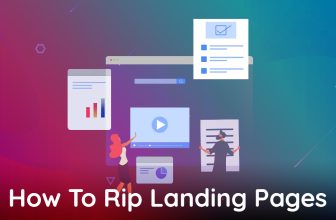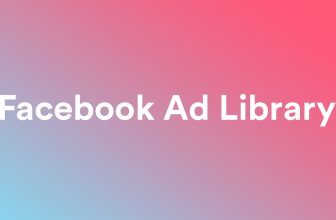
In this guide we are going to talk about how to get the most out of your ad spend with different campaign structures, including tips for begginers with new ad accounts and limited budgets.
Lots of service and lead based businesses hop onto the Google Ads bandwagon every single year, but truth is, only a few of them end up being big spenders.
Most kick off with humble budgets. These accounts need some extra support, especially when competing with the heavy spenders.
Here’s the key, you need to craft a killer paid search strategy that aligns with your strengths and works well within the limits of the PPC platform.
If you find yourself with just a handful of bucks each month for ads but need those sweet, profitable leads, it can feel a bit like you’re in a tight spot. So what’s the trick? Make sure everything is finely tuned.
Best Campaign Practices For Leadgen
Lead generation advertisers are lucky, they get access to almost everything that lets say an ecommerce advertiser does, except for the shopping inventory, which needs a nifty product feed.
Now, let’s take a look into the Google Ads campaign types, and I’ll share my best tips on how to approach each one. Ready? Let’s go.
Search
Okay, let’s talk about Search, a key player in the Google Ads game that you’ve probably seen a lot. These are the text ads that mix and mingle with the regular search results when you look something up.
Now, for the newcomers in the Search world, I usually suggest a three-step plan:
- Start your campaign with manual bidding and use phrase match keywords.
- In the early weeks, focus on getting traffic and gathering data.
- Once you’ve got enough data, switch to broad match keywords and smart bidding.
Other than that, to make Google work even better for you, here are a couple more tips:
- Connect your CRM or customer database to Google, either directly or through Zapier.
- Feed back info on which leads turned into sales so Google can get even smarter.
- Keep an eye on the search terms data. This helps you filter out the not so useful traffic by adding negative keywords. It’s like telling Google, “Hey, not interested in this stuff!”
Performance Max
Alright, so when your Search campaign is doing fine, you should check out Performance Max.
So, what’s Performance Max? It’s like a smart campaign that uses advanced math to show your ads to people looking for things like what you offer.
But here’s the thing: I don’t usually recommend going straight to Performance Max for lead gen (getting potential customers). Why? Because it often doesn’t work as well if you haven’t run a Search campaign first.
Performance Max relies on past data to find more leads. For lead gen, where there’s no actual sale online:
- Use offline conversions to share info on what happens after the lead converts.
- Set up spam guards to keep out fake leads.
- Be ready, because Performance Max might grab some traffic from your Search ads.
Unlike for online shops, where Performance Max is a big deal, for lead gen, it’s more of a choice a good one if you do it right, but still a choice.
Display
Let’s talk about Display campaigns. These are the ads you see on various websites through the Google Display Network. Ever had an ad seem to “follow you” from site to site? That’s probably from a Google Display campaign.
Now, here’s the deal, these ads can be a bit unpredictable. Sometimes they work great, and other times, not so much. So, you’ve got a choice. You can give them a shot alongside your Search campaign, or you might decide to skip them entirely. It’s all about using your budget wisely and focusing on what’s proven to work best for you.
YouTube
YouTube offers different types of ads: banner ads, skippable video ads, and unskippable video ads of different lengths.
Now, YouTube is a treasure trove for potential leads if you play your cards right. People use it for both entertainment and finding solutions, so it’s a great place to connect with your audience. But, here’s the catch – if you approach it the same way you do with Search, it might end up being costly with little return.
Here are some key things to keep in mind about YouTube Ads:
- Understanding YouTube and How Ads Work: Get the hang of how YouTube functions and the different ad formats available.
- Pairing Ads with an Organic Presence: It’s not just about ads; having an organic (non-paid) presence on YouTube matters too.
- Building Brand Safeguards: Ensure your brand is protected and presented well in your ads.
- Advice on Monitoring and Tracking: Keep a close eye on how your ads are performing and make adjustments as needed.
- Reporting and Data Analytics: Utilize tools to gather data and analyze how well your YouTube Ads are doing.
Remember, YouTube can be a powerful tool if you approach it strategically and keep these points in mind.
Demand Gen
Google Ads has a new feature called Demand Gen, and it’s going global to take over from Discovery campaigns.
Here’s the scoop: Demand Gen is all about sparking interest from folks who might not know about you yet. It does this by showcasing your ads on platforms like the Discover app and YouTube Shorts.
Now, keep in mind, Demand Gen is like a superhero for bigger accounts with heftier budgets and loads of historical data. But, even if you’re not a digital heavyweight, it’s worth giving it a shot. Just be sure to wrap your head around how Demand Gen campaigns work before you dive in.
Meta
Meta lets you throw your ads onto the social media playgrounds of Instagram and Facebook. It’s not paid search, but it can still be a game-changer for lead generation.
Just like YouTube, your experience on Meta can be a hit or miss, depending on how you play your cards. So, before diving in, get the lowdown on the must-knows for lead gen campaigns on Meta:
- Picking the right campaign types.
- Cracking the attribution code.
- Mastering audience targeting.
- Navigating forms and landing pages.
- Getting creative with your ads.
- Fine-tuning intent and funnel targeting.
- And, of course, what to do after the conversion
How To Structure Your Campaigns
When you’re dealing with new ad accounts or tight budgets, less is often more in the world of media buying. Don’t overwhelm Google with an abundance of campaigns or ad groups, keeping it light helps Google do its magic in maximizing your reach and most importantly your conversions.
Let’s break it down, start with one Search campaign, sprinkle in a couple of ad groups centered around keywords. If you’re working with a larger budget that still falls on the modest side, consider adding a second campaign.
And don’t forget, budgets, performance metrics, and location specifics can be solid reasons to slice and dice your lead gen campaigns into neat little segments. Keep it simple, keep it effective!
How To Track Conversions
Alright, let’s break down what happens after someone clicks on your lead-gen ad. Unlike selling products online, where the deal is pretty much sealed with a purchase (unless there’s a return), lead-gen is a bit of a journey. There are steps involved, kind of like a checklist:
- Qualification: Making sure the lead is a good fit.
- Outreach: Reaching out to them.
- Quotes: Providing price estimates.
- Demos: Demonstrating your product or service.
- Phone calls: Having those important conversations.
- Salesmanship: Convincing them your offering is the best.
Now, to keep tabs on all this, you need to set clear goals. We usually focus on three things:
- Calls: Track them from both the ad and your website.
- Form submissions: Keep an eye on those.
- Chat engagement: Monitor interactions.
Tools like Salesforce and HubSpot directly connect with Google Ads, making life easier. If you’re using other tools, Zapier can swoop in and gather all your leads, including the Google Click ID.
Why’s this ID important? Well, it lets you share what happens after the click back with Google Ads as deals move forward. It’s like keeping Google in the loop as your potential customers take steps closer to making a purchase.
Common Mistakes in Lead Gen
Let’s talk about some common blunders folks make when managing PPC ads. We all slip up now and then, and sometimes the ad platforms throw in options that benefit them more than you.
Here are five common mistakes to keep an eye out for, especially if you’re new to lead gen campaigns:
- Location Targeting:
- Make sure your ads are reaching the right crowd. Set your location targeting to “presence” so your ad shows only to people physically in your chosen areas.
- Search Partners:
- Ever seen text ads on a random website? That’s Search Partners in action. They often don’t hit the mark. If it’s not working for you, bail out of this option.
- Spam Guards:
- The internet has its fair share of bots and troublemakers. Use spam guards like reCAPTCHA and Honeypot to fend off click fraud and junk leads.
- Conversion Tracking:
- Pick meaningful events for conversion tracking. Page visits might inflate your numbers, but they don’t tell you much about real intent. Choose actions that truly show your audience’s active interest.
- Auto-Apply Recommendations:
- Google’s version of “set it and forget it.” Some are fine, but others might not suit your goals. Save this for later when you’re more in tune with Google Ads.
Keep an eye out for these, and you’ll steer clear of some of these most common mistakes!
Conclusion
In conclusion, starting out with paid ads for lead generation can be a game changer for your business. Whether you’re new to the field or looking to boost your strategy, avoiding common mistakes and understanding the nuances of different ad platforms is the key.
From Google Ads to Meta, YouTube, and beyond, each platform offers unique opportunities and of course challenges as well. Remember to stay vigilant against oversights, experiment wisely, and track always track the performance of your campaigns.







